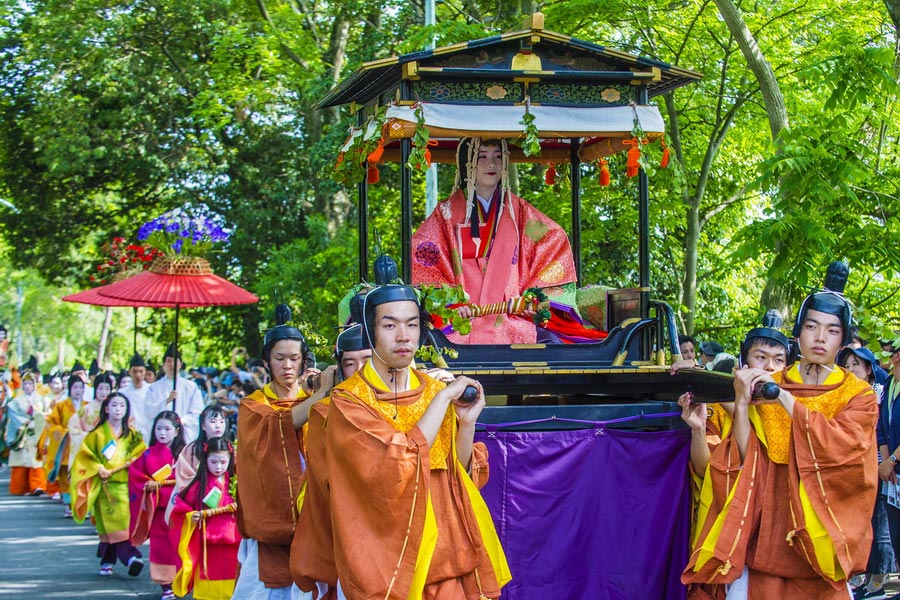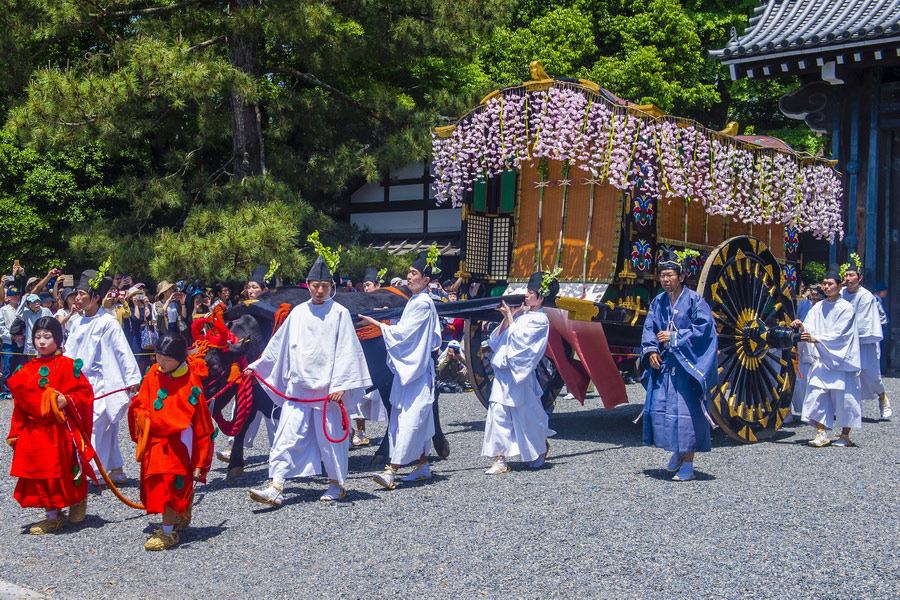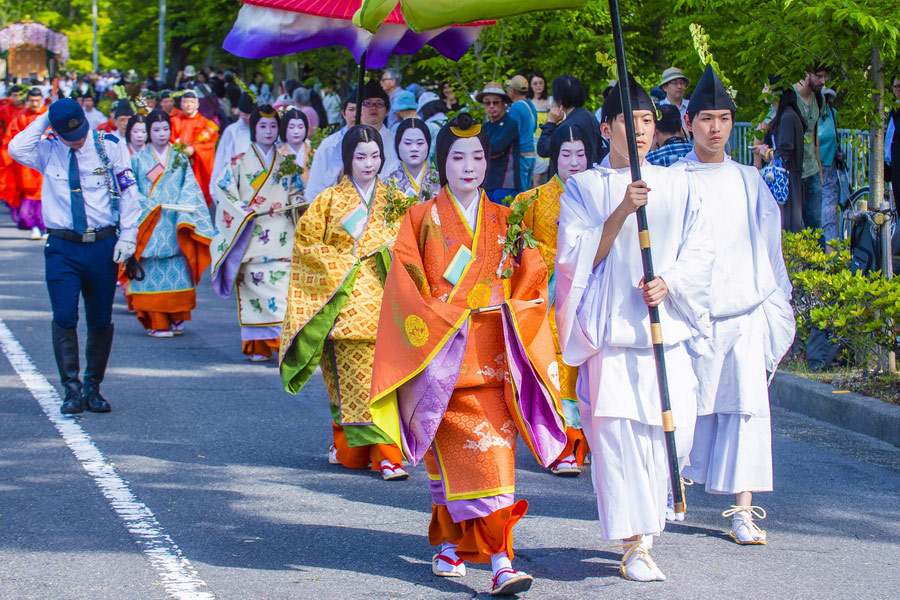
Aoi Matsuri (葵祭), or the Hollyhock Festival, is one of Kyoto's three major and oldest Japanese festivals, held annually on 15 May. The highlight of the festival is the Roto-no-gi Procession, with 500 participants dressed in elaborate costumes from the Heian period (平安時代) (794-1185). The parade begins at the Kyoto Imperial Palace (京都御所, Kyōto-gosho) and passes through the Shimogamo Shrine (鴨神社, Shimogamo-jinja) also known as Kamomioya-jinja, and the Kamigamo Shrine (賀茂別雷神社, Kamo-wakeikazuchi jinja), both designated World Heritage sites by UNESCO, allowing spectators to experience the atmosphere of ancient Japanese culture.
The origins of Aoi Matsuri date back to the 6th century, during the reign of Emperor Kinmei (欽明天皇) (509-571). However, the festival was first celebrated in the 8th century, when Kyoto became the capital. At that time, Japan was plagued by natural disasters, which were believed to be caused by the god Kamo due to improper worship. To stop the floods and epidemics, the emperor sent an envoy and his entourage to the Kamigamo Shrine to offer prayers and hollyhock (mallow or alcea) leaves as a gift. The heart-shaped hollyhock leaves were believed to protect against disasters, making them a central symbol of the festival.
Although the main event takes place on 15 May, the festival is celebrated throughout the month. Activities include yabusame (流鏑馬), which is a type of mounted archery, at Shimogamo Shrine, and horse racing, kurabe-uma at Kamigamo Shrine, where participants wear Heian period costumes. Near the Mitarashi River (御手洗川), priests perform purification rituals in preparation for the main event. On 12 May, a procession moves from Shimogamo Shrine to Mount Mikage (御岳山, Mitakesan) Temple, symbolising the union of the sacred spirit with the earth.

The festival culminates in the grand Roto-no-gi procession. In the past, only the imperial family and the aristocracy participated in it, but today amateur actors have taken their place. The 8-kilometre procession begins at 10:30 A.M. at the Kyōto Imperial Palace and passes through Shimogamo Shrine before ending at Kamigamo Shrine, where prayers are offered. During the procession, large red umbrellas decorated with flowers are carried, symbolising a bountiful harvest and the renewal of nature.
The procession is led by an actor portraying the emperor's envoy, Lieutenant General Konoe, easily recognisable by his black clothes and white horse with a silver mask. He is followed by the gissha (牛車), also called “Gosho-Guruma”, a square wooden carriage with black lacquered elements and decorations resembling hollyhock leaves. The roof is pagoda-shaped with wisteria and hollyhock garlands cascading down, and golden mats decorate the front and sides. The structure is supported by two large wheels, each taller than an average-sized person.
Inside the gissha sits the main figure of the festival, the saiō (斎王), the priestess who represents the Emperor of Japan and oversees the rituals. She wears an elaborate kimono weighing up to 20 kilograms and holds a cypress fan. Traditionally, the saiō was chosen from the imperial family, but today she is chosen among unmarried women from Kyoto. Before the main procession, on 4 May, the saiō performs the Saio-dai purification ritual in the Mitarashi River, symbolising the cleansing of sins and her spiritual preparation for the festival.


